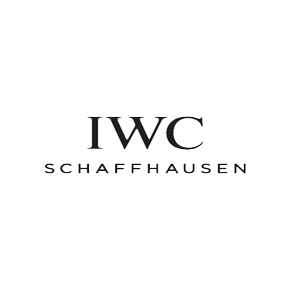 IWC(萬國錶)
IWC(萬國錶)In 1868, Boston watchmaker Florentine Ariosto Jones founded the “International Watch Co.” in Schaffhausen, far from the watchmaking centres of French-speaking Switzerland. His plan was to bring together progressive American production techniques with the skilled craftsmanship for which Swiss watchmakers were renowned. And it was in Schaffhausen that he found ideal conditions: modern factory premises, a hydropower plant driven by the Rhine to run his machines and, not least, a centuries-old horological tradition. The company’s excellent reputation was established right from the start with the very first Jones calibre named after its founder. In 1885, IWC demonstrated its innovative spirit in the Pallweber pocket watches, with their revolutionary digital display for hours and minutes. The end of the 19th century saw the appearance of IWC’s first wristwatches featuring the 64-calibre pocket watch movement.
History
The IWC Da Vinci
In the 1970s and 80s, the Swiss watchmaking industry underwent a phase of far-reaching technological change. Following in the wake of the use of miniaturized electric batteries as a source of energy for wristwatches from the late 1940s onwards and the invention of the transistor in 1947, purely mechanical watch technology developed into a hybrid discipline of precision mechanics and electronics.
IWC managed to avoid investing heavily in expensive and eventually unsuccessful technologies, such as the electronically controlled balance. The UHRENFABRIK H. E. HOMBERGER co-founded and was a shareholder in the “Centre Electronique Horloger”(CEH)in Neuchatel and was financially involved in the development of the Beta 21 quartz wristwatch movement, which was first presented to the public at the 1969 Industrial Fair in Basel. In actual value terms, this movement accounted for about 5-6% of total sales of quartz watches. Parallel to this, the company expanded its collection of jeweler watches to include ladies watches with mechanical movements. The year 1973 was IWC's most successful of the post-war period.
The cataclysmic rise in gold prices in 1974 had grave consequences for the watch exporting industry. Between 1970 and 1974 the price of gold rose from 4850 to 18 000 francs and the value of the dollar against the Swiss currency plummeted by up to 40%. As a result, the price of watch exports rose by as much as 250%. At the same time Japan was flooding the market with cheap quartz watches.
A change of direction was necessary and this led to the adoption of a number of measures. In order to survive, IWC, under the leadership of Director and CEO Otto Heller, built up a line of high-quality pocket watches, and, apart from setting up its own modern wristwatch and case manufacturing facilities, began working closely with Ferdinand A. Porsche as an external designer. In addition, IWC pioneered new watchmaking technologies, notably the first titanium bracelets, developed in 1978.
For its new plans IWC required a high level of venture capital. With the help of the Swiss Banking Corporation, the company was put in contact with VDO Adolf Schindling AG, which took a majority interest in IWC in 1978.
At the same time, IWC reacquired the name it had originally been given by its founder F.A. Jones (INTERNATIONAL WATCH CO. AG).
Official website



